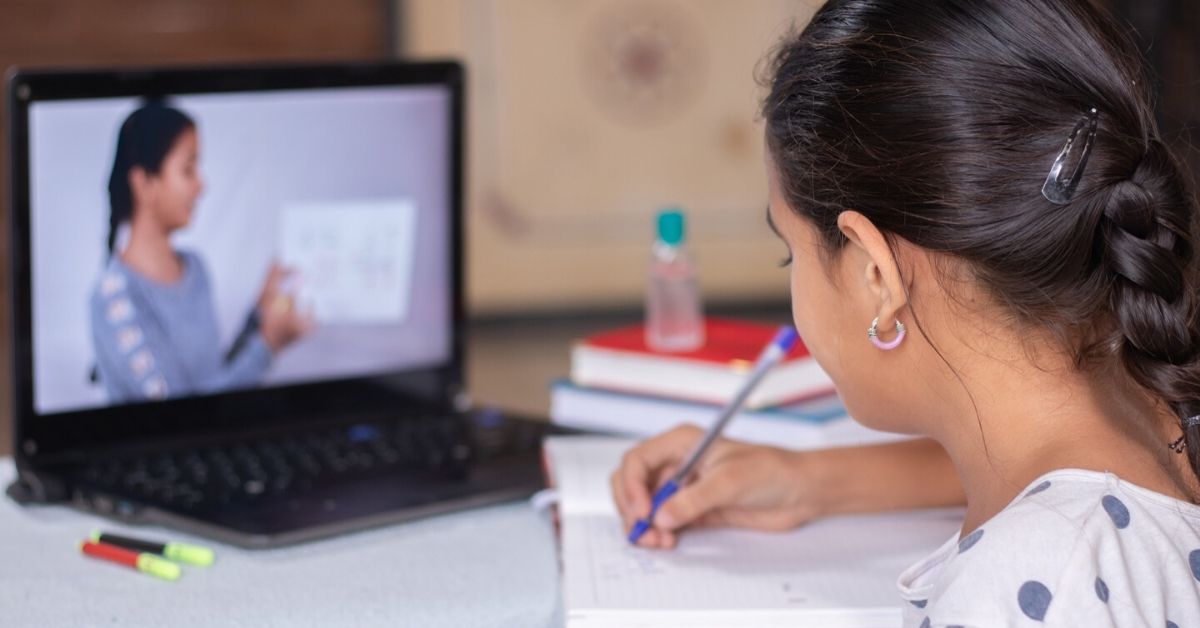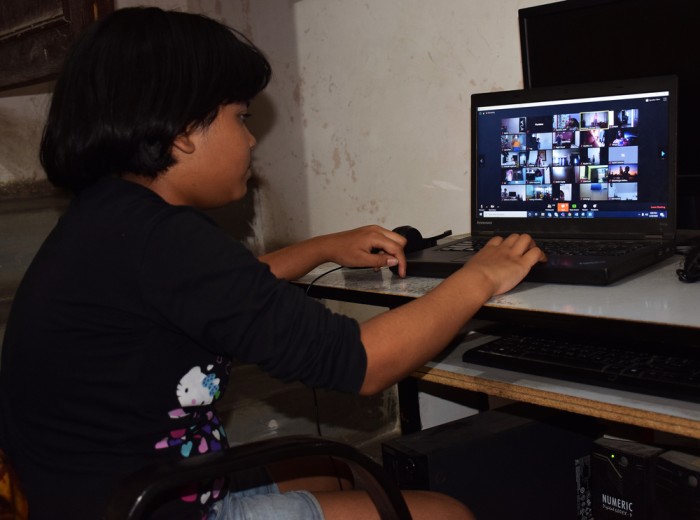Are Long Online Classes Straining Your Kid’s Eyes? Doctor Shares What You Can Do
With even classes going digital now, all the extra screen time can trigger eye-strain, redness and even blurry vision.

For children today, using technology comes as naturally as breathing. Be it computers, tablets, mobile phones, or gaming consoles – our kids learn to operate these devices faster than us. Sadly, the flip side is their addiction and dependency on these gadgets. The lockdown has further compounded the problem with the virtual school classes, making it increasingly difficult to reduce the screen time of young eyes.
In such a scenario, parents, like me, are constantly worried about their long-term optic health and the strain on their eyes. I keep thinking if I can do something more to reduce the stress and, at times, the pain my kids complain of sometimes.
To get answers to all this and more, I talked to Dr Ashwini Kulenur, an Ophthalmologist and a Professor at the Department of Ophthalmology, Saptagiri Institute of Medical Sciences in Bengaluru.
Here are some of the most important things we talked about.
What are the General effects of Prolonged Exposure To Screen?

Blurry vision/Accommodation spasm
“Gazing at the same distance for an extended time can cause the focusing system of eyes to temporarily spasm. This condition causes a child’s vision to blur when they look away from the screen,” says Dr. Kulenur.
Myopia
Looking continuously at the computer screen and other screens may increase the chances of developing nearsightedness or myopia, which is a type of refractive error where you see blurred images as your eyes do not bend light correctly. “Studies have shown that if children spend more time playing outside, it just might result in healthier vision development in children,” says Dr. Kulenur.
Eye fatigue
Muscles around the eye, like any others, can get tired from continued use. Concentrating on a screen for long periods can cause headaches, eye pain, brow-ache, dryness, and even lead to excessive rubbing and issues with concentration.
Dry eyes
Long stretches of screen time also lead to the eyes getting dry and irritated. Studies show that people blink significantly less often when concentrating on a digital screen, which can leave eyes dry and irritated. “The problem can be worse for children who look up at a screen that is positioned for adult use resulting in wide-open eyes—speeding up the evaporation of the eye’s tear film,” adds Dr. Kulenur.
While all this might sound scary, Dr. Kulenur mentions there are small changes that parents can implement to ensure good eye care.
Here’s How You Can Help Your Child

Dr. Aman Malik, an eye surgeon, based in New Delhi, in an earlier interview with TBI, had shared some valuable tips on how to reduce the digital eye strain that one often experiences when looking at a screen for a period of time. “Basic eye-exercises, which involve the 20-20-20 rule, must be adhered to and along with this anti-glare glasses, lubricating eye-drops, and regular eye-checkups are all essential.”
Explaining this further, Dr. Kulenur adds:
- Lay emphasis on a good nights sleep
Not getting enough shut-eye leads to tired, sore eyes. Children need a minimum of 8 full hours of restful sleep. Dr. Kulenur says, “Studies recommend that children should not be sleeping with devices in their bedrooms, and this includes television, computers, and smartphones.
In addition, it is also recommended that exposure to screens is completely avoided for atleast an hour prior to going to bed.
- Schedule in some physical activity
Putting down the device or stepping away from the computer or television can help avoid eye and vision problems from too much screen time. Children aged six years and older are advised to get at least 60 minutes of physical activity each day, says Dr. Kulenur. Outside play can also be a great “workout” for children’s vision—giving them a chance to focus at different distances and getting exposure to natural sunlight.
- Take frequent breaks
Ensure your child gets frequent breaks from virtual classes. Dr. Kulenur says, “The American Optometric Association recommends the 20/20/20 rule – look away from the screen every 20 minutes, focus on an object at least 20 feet away, for at least 20 seconds.”
Also, children should look away from the screen for at least 10 minutes every hour.
- Remember to blink
Encourage your child to blink extra, especially when they take breaks to avoid dryness. Your pediatrician or eye doctor may recommend a moisturising eye drop or even the use of a room humidifier if your child continues to be bothered by dry eyes.
- Spectacles
If your child has any refractive errors, get them fitted with spectacles. For those who are used to contact lenses, it is advisable to switch to using glasses while working on the screen for longer periods of time.
- Screen positioning
Make sure the screen of your child’s desktop or laptop computer is slightly below eye level. Looking up at a screen opens eyes wider and dries them out quicker. Dr. Kulenur says, “Positioning the device screens based on the 1/2/10 rule, which means – mobile phones ideally at one foot, desktop devices and laptops at two feet, and roughly 10 feet for TV screens (depending on how big the screen is), should help.”
- Find ways to reduce glare from the computer screen
In addition to changing screen angles, the glare from a computer screen can be minimised by adjusting room lighting. The level of illumination in a room when using a computer or other screen should be roughly half of what it would be for other activities such as writing on paper or working on crafts, explains Dr. Kulenur.
- Healthy diet
Consuming a diet rich in Vitamin A and C is very good for good optical health. Fruits and vegetables rich in antioxidants like papaya, carrot, broccoli, spinach, and eggs should be included.
- Decrease the brightness of the screen to a more comfortable level for viewing
- Regular yearly visits to an ophthalmologist may help identify early signs of visual problems.
There is no doubt that technology use by children is here to stay!! Fortunately, clear steps such as those above exist to mitigate and eliminate, in some cases, the negative impact on children’s vision and overall health.
(Edited by Saiqua Sultan)
Like this story? Or have something to share?
Write to us: [email protected]
Connect with us on Facebook and Twitter.
If you found our stories insightful, informative, or even just enjoyable, we invite you to consider making a voluntary payment to support the work we do at The Better India. Your contribution helps us continue producing quality content that educates, inspires, and drives positive change.
Choose one of the payment options below for your contribution-
By paying for the stories you value, you directly contribute to sustaining our efforts focused on making a difference in the world. Together, let’s ensure that impactful stories continue to be told and shared, enriching lives and communities alike.
Thank you for your support. Here are some frequently asked questions you might find helpful to know why you are contributing?


This story made me
-
97
-
121
-
89
-
167













